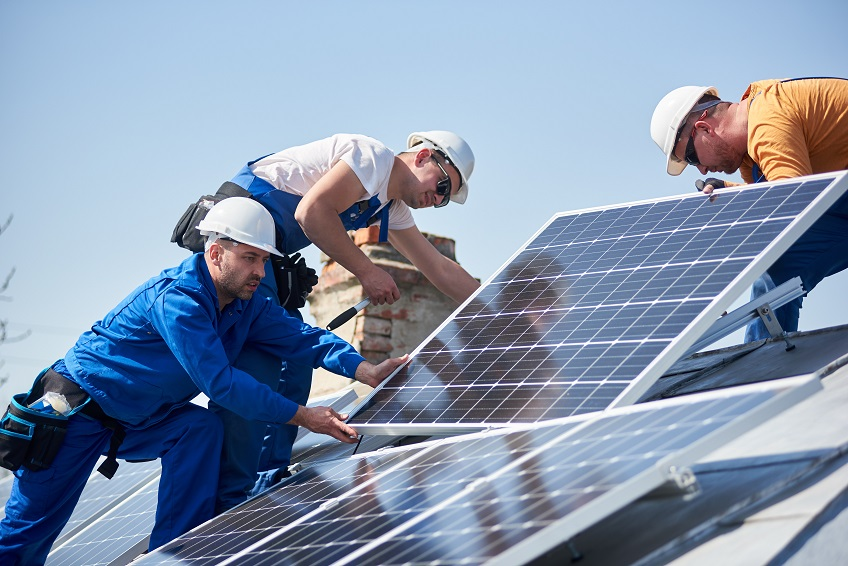
Many factors contribute to the effectiveness of solar panels. Two important factors to consider are panel alignment (direction) and angle (vertical tilt). The University of Calgary’s Energy Education team states: “The placement and orientation of solar panels is just as important as which type of solar panel is used in a given situation.” Ideally, you want the solar rays to hit the panels perpendicularly, which will help you get the most power from your system. If you’ve made an investment in solar, you want to ensure you’re getting the most bang for your buck in addition to the receiving a highly effective stream of power.
Making sure the system’s panels face the right direction will ensure the best production of energy. In Utah, since we’re in the northern hemisphere, it’s generally best to have panels placed facing south, or toward the equator, because this allows for the most direct light throughout the day. Depending on the location of the panels on your structure, it’s often useful to align the panels a little southwest in order to collect rays as long as possible, even during evening hours while the sun is setting. But some homes along the Wasatch Front may get more exposure to sun as it is rising in the morning, which would mean an eastern alignment may be better.
The angle of solar panels refers to their vertical tilt. EnergySage News states: “Photovoltaics produce power when the angle at which the sun’s rays hit the panel surface … is small, or when light strikes the panel as close to perpendicular as possible. Therefore, the best angle for your solar panels is the one that allows the panels to get the most direct, perpendicular light.” The most effective angle for a solar panel to be set is determined by geographical latitude, and the general rule for optimal energy production year after year is to set each solar panel tilt angle equal to the geographical latitude. This means that if a solar array hits at about 50o latitude, the best angle or tilt should also be set to 50o. The closer you’re located to the equator, the more a panel should be tilting straight up. As you head toward the poles, the panels should be adjusted to tilt toward the direction of the equator.
Typically, panels that face directly east or west produce about 20% less electricity than panels facing south. Of course, there are environmental and logistical factors to consider when it comes to final placement of solar panels. Snow accumulation, shading from structures or trees, weather changes, roof pitches, personal needs, etc. are all factors to consider when deciding on a placement for a system. As you can see, it’s not a one-size-fits-all strategy. Because of the many considerations, it’s important to work with an experienced solar provider that understands the local area as well as your personal requirements. For the best in experience and execution, reach out to Four Seasons Solar.
